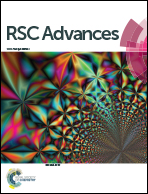Debunking the essential effect of temperature and voltage on the current curve and the nanotube morphology
Abstract
The formation mechanism of anodic TiO2 nanotubes remains to be unclear till now. Many researchers study the influence of temperatures above 0 °C instead of below 0 °C. Few papers before have explained the relationship between the current–time curve and the morphology of the nanotubes. In this study, the innovative ‘oxygen bubble model’ and the ionic current and electronic current theories were introduced to explain the growth of nanotubes below 0 °C. The length of anodic TiO2 nanotubes at 15 °C, 0 °C, −10 °C were 1.28 μm, 0.93 μm and 0.21 μm, respectively, but the diameter of anodic TiO2 nanotubes was almost the same, at about 164 nm. When the temperature was low, the magnitude of electronic current and the ionic current was small, the mold effect was weak and nanotubes could not be formed. At the same time, this study shows that the dissolution reaction of the field-assisted solution theory has no electron gain or loss, and it has nothing to do with the current, which negates the field-assisted dissolution theory. A novel two-step anodization was used to verify the conclusion. It was found that nanotubes could be obtained when the anodizing current was decreasing or increasing. Also, ginseng-shaped nanotubes are formed at a particular voltage sequence. Based on the ‘oxygen bubble model’ and the ionic current and electronic current theories, the formation process of nanotubes of two-step anodization is explained clearly.



 Please wait while we load your content...
Please wait while we load your content...